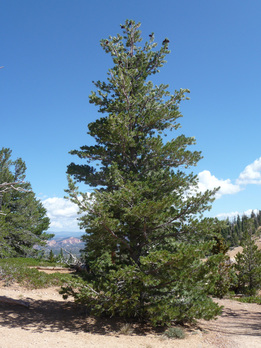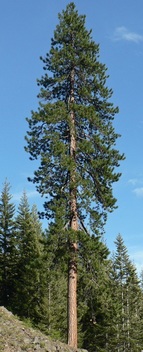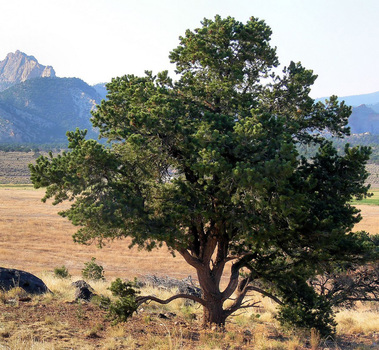Page 656
On relationships between climate and plant distribution
Last week I found a fascinating publication* from the USGS on relationships between climate and plant distributions. In that book I found a table (Table 8) that reminded me of just how wide a range of environmental conditions over which different pine trees will grow in Utah. I was fascinated by the different climate relations for three common pine species I have seen while hiking in the Wasatch Mountains: Pinus flexilis (limber pine), Pinus ponderosa (Ponderosa pine), and Pinus edulis (piñon pine).
I copied the data from Table 8 and put them into an Excel file so that I could create climate diagrams to study the patterns that emerged. Wow was I impressed by these clear patterns. Soon I will have to write up my analysis but it is already clear to me that there are clear plant distribution differences related to: temperature, seasonality of precipitation, with clear implications for elevational distribution, drought, and summer monsoon.
Last week I found a fascinating publication* from the USGS on relationships between climate and plant distributions. In that book I found a table (Table 8) that reminded me of just how wide a range of environmental conditions over which different pine trees will grow in Utah. I was fascinated by the different climate relations for three common pine species I have seen while hiking in the Wasatch Mountains: Pinus flexilis (limber pine), Pinus ponderosa (Ponderosa pine), and Pinus edulis (piñon pine).
I copied the data from Table 8 and put them into an Excel file so that I could create climate diagrams to study the patterns that emerged. Wow was I impressed by these clear patterns. Soon I will have to write up my analysis but it is already clear to me that there are clear plant distribution differences related to: temperature, seasonality of precipitation, with clear implications for elevational distribution, drought, and summer monsoon.
*Thompson, R.S., Anderson, K.H., Pelltier, R.T., Strickland, L.E., Shafer, S.L., Bartlein, P.J., and McFadden, A.K., 2015, Atlas of relations between climatic parameters and distributions of important trees and shrubs in North America—Revisions for all taxa from the United States and Canada and new taxa from the western United States: U.S. Geological Survey Professional Paper 1650–G, http://dx.doi.org/10.3133/pp1650G.
Images from https://upload.wikimedia.org/wikipedia/commons/5/59/Pinus_flexilis_Bryce_Canyon.jpg
https://upload.wikimedia.org/wikipedia/commons/f/fe/Pinus_ponderosa_15932.JPG
https://upload.wikimedia.org/wikipedia/commons/b/b9/Pinus_edulis_Torrey-UT.jpg
Images from https://upload.wikimedia.org/wikipedia/commons/5/59/Pinus_flexilis_Bryce_Canyon.jpg
https://upload.wikimedia.org/wikipedia/commons/f/fe/Pinus_ponderosa_15932.JPG
https://upload.wikimedia.org/wikipedia/commons/b/b9/Pinus_edulis_Torrey-UT.jpg


